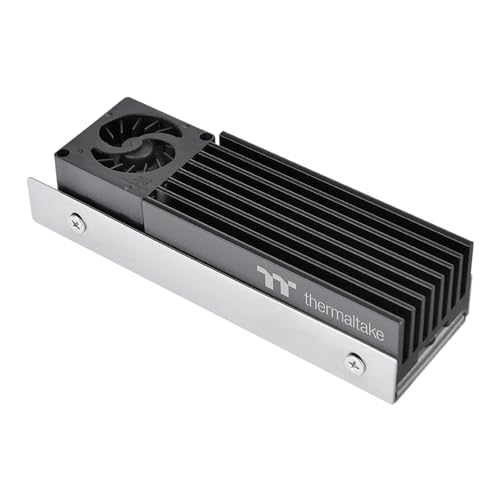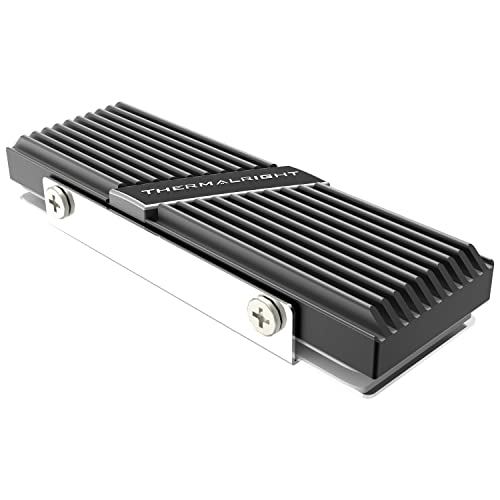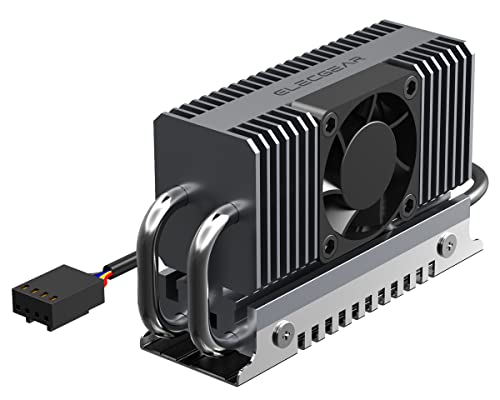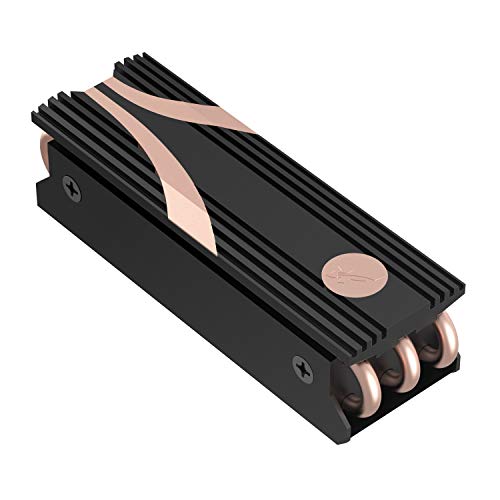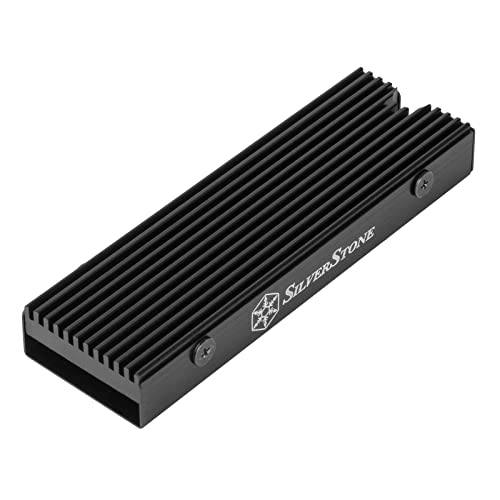Top 5 M.2 2280 SSD Coolers for PCIe 4.0 and 5.0 Drives on Amazon
Modern NVMe drives are blisteringly fast, but heat can become a big problem on high performance PCIe 4.0 and PCIe 5.0 drives. Under real workloads, an M.2 controller can hit its thermal limits within seconds and clamp down performance to protect itself. That drop is noticeable in the places where gamers and content creators feel most. Just using the drive!
Much like a CPU heatsink a M.2 SSD cooler reduces controller hotspots and works to dissipate heat so that clocks stay high and transfers stay smooth.
Motherboard heatsinks help, but they are not magic. Many M.2 slots sit directly under the GPU or near a warm chipset in zones where airflow is often poor. These heat spreaders quickly saturate and will often remain extremely hot. That is where a purpose-built cooler earns its keep. Even a slim passive heatsink can shave 8 to 15 °C off peak controller temps in a well-ventilated case, while active designs with tiny PWM fans or micro blowers add headroom for long, sustained transfers. For gamers, that means fewer hitchy installs, faster level loads, and more consistent DirectStorage behavior. For content creators, it means steadier scratch-disk performance, fewer thermal slowdowns during long transfers and less time waiting on disk I/O as deadlines loom.
Below are five M.2 2280 coolers that work in real builds. You will see a mix between compact active coolers, heat-pipe towers, and low-profile passive options. Before you buy, check clearance under your GPU, confirm whether the drive is single- or double-sided. This will ensure that you pick the right pad thickness and ensure that the cooler will actually fit in your system. For active coolers make sure you have a spare 3-pin or 4-pin header nearby.
Our Top 5 picks:
1) Thermaltake MS-1 M.2 2280 SSD Cooler
Brief introduction: Compact active cooler for hot Gen4 and Gen5 drives, using a direct-touch heat pipe, dense fin stack, and an 8,000 RPM micro blower.
Key specs:
- Form factor: 2280, low-profile top-flow shroud
- Cooling: copper heat pipe with aluminum heatsink, 8,000 RPM micro fan, rated about 16 dB
- Power: 12 V, 3-pin fan header required
- Design goal: sustain high read and write throughput on next-gen NVMe when case airflow is modest
Why this pick: The MS-1 targets the controller hot spot with focused airflow while the heat pipe spreads heat into the fins. It is small enough for most x16 GPU clearances and is a strong fix when a motherboard shield is not keeping up during big installs or long captures.
2) Thermalright M.2 2280 Heatsink Cooler
Brief introduction: A tidy, clamp-on passive sink from a respected cooler brand. Great when you want zero noise and reliable mounting pressure.
Key specs:
- Size: roughly 70 × 24 × 12 mm for 2280 modules
- Construction: aluminum body with double-sided clips and screws for firm contact
- Accessories: thermal pads for controller and NAND
Why this pick: If your case has decent airflow, this sink is a set-and-forget upgrade. The screw clamp compresses pads evenly for better thermal transfer than peel-and-stick plates, and the low profile avoids GPU interference in tight builds.
3) ElecGear EL-80X Aluminum Heatsink with PWM Fan
Brief introduction: Active fin-stack cooler with 2 × 4 mm copper heat pipes and a 30 mm PWM fan to keep PCIe 4.0 and 5.0 NVMe drives in the fast lane.
Key specs:
- 2280 form factor; double-deck aluminum heatsink with heat pipes 30 × 30 × 7 mm PWM fan up to 9300 RPM, 12 V, ~60 mA; 4-pin connector
- Airflow spec about 3.16 CFM; pads for controller, NAND, and back side included
- Dimensions approx. L80.5 × W24.1 × H45 mm
Why this pick: When you push sustained writes or game installs, the extra heat-pipe mass and fast PWM fan add real headroom. Confirm vertical clearance if the slot sits under a GPU.
4) SABRENT Rocket M.2 2280 SSD Heatsink
Brief introduction: A well-known passive cooler that uses copper + aluminum to pull heat from the controller into a grooved fin body.
Key specs:
- 2280 fit; includes thermal pad and mounting bracket
- Materials: copper heat spreader with aluminum finned shell
- Approx. size 3.1 × 1.0 × 0.9 in on the silver variant
Why this pick: If you want silent cooling from a storage brand builders trust, Rocket Heatsink is a tidy solution that fits most boards and avoids fan power cables.
5) SilverStone TP05 Slim-Profile M.2 Heatsink
Brief introduction: A slim, double-layer aluminum kit with quality pads that improves heat spread while keeping a very low Z-height for tight slots.
Key specs:
- Slim aluminum heatsink with top and bottom plates
- Efficient thermal pads included; designed for M.2 2280
- Low-profile design to reduce GPU-backplate conflicts
Why this pick: Ideal when you need better thermals but only have a few millimeters of clearance. Easy to install, silent in operation, and from a trusted chassis and cooling brand.
Quick fit and power reminders
- Length: All picks fit M.2 2280 drives.
- Height: Measure the space under a GPU backplate or chipset heatsink before choosing taller fin stacks.
- Fan headers: Active models need an open 3-pin or 4-pin header.
- Pad thickness: Match to single- or double-sided SSDs; replace pads if you remount.
Final thoughts
For gamers, an M.2 cooler is cheap insurance against stutter during installs, shader compilation, and asset streaming. For creators, it keeps scratch disks and render caches humming during long exports so CPU and GPU work is not bottlenecked by disk I/O. Motherboard shields are fine for light loads, but when you push PCIe 4.0 or 5.0 hard, an aftermarket cooler preserves top speed and reduces thermal cycling that can hurt longevity over time.
If you want a compact active fix tuned for next-gen heat, Thermaltake’s MS-1 is a strong first choice. Prefer silent operation in a case with good airflow? Thermalright’s clamp-on sink is low profile and effective. Need maximum headroom for sustained transfers? Titanium Micro’s heat-pipe design with PWM is the brute-force option. For balanced active cooling that stays tidy in cramped builds, GRAUGEAR and ineo round out the list. Confirm clearance, pick the pad thickness that matches your SSD, and your NVMe drive will run cooler, faster, and longer.

